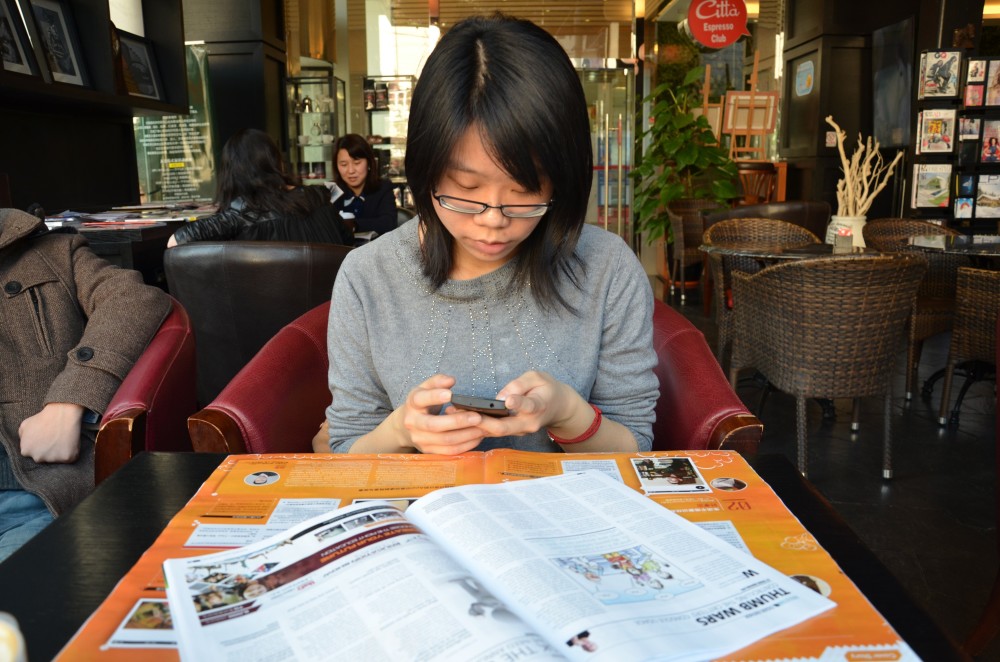By Paresh Dave
Los Angeles Times.
LOS ANGELES
One app to rule them all might be the future on smartphones, and if so, Snapchat knows it needs to bolster the features in its chat function.
The Los Angeles startup appears to be doing just that, with software experts revealing big potential changes to Snapchat’s chat screen.
If the details prove correct, Snapchat wants to bring audio calls and simpler video calling to a mostly text-based interface.
It may also be possible soon to share digital sketches as well as images from a smartphone’s photo gallery.
Snapchat users already collectively spend millions of hours a day on the app watching football highlights, reading news stories and posting pictures. But the company, like many of its rivals, wants even more time from its users and is targeting its chat function as one spot to lure them in.
Last week, eagle-eyed software developers who regularly examine Snapchat’s programming code noticed references to the new calling and sharing features in what Snapchat had called “v2” of its chat window.
The developers noted their findings on an online forum over the weekend, and the Los Angeles Times confirmed the information with one of them, Marcell Meszaros. He added that Snapchat also is testing a new video-editing tool that reverses playback.
Snapchat has yet to announce such features and declined to comment.
Such changes would make Snapchat’s chat box look a lot like Facebook Messenger. That’s not a surprise, the two technology rivals are battling for revenue from video advertising, regularly trumpeting the billions of views that videos on their respective services get each day.
But to command more user attention and to diversify revenue, Facebook and Snapchat are counting on more than just video. Their ad businesses stand to grow more lucrative as users interact with their apps more, and bolstering chat features is one way to do it.
Snapchat enables sharing of videos, photos and text; two users who are already simultaneously communicating by text in the app also may chat by video.
But a growing list of apps, including Dubsmash, YouNow, Periscope and Unmute, are peddling new ways for people to stay in touch. For instance, YouNow lets young musicians stream video of their practice sessions to thousands of people around the world and electronically collect cash tips from fans. For Snapchat to fend such services off, it has to find ways to fill in gaps such as live streaming and group chat.
Facebook for its part plans to introduce ways for shops and companies to chat with individuals through its Messenger and WhatsApp chat apps. New Messenger features are expected to be announced at an April conference Facebook is hosting for software developers.
Meanwhile, WhatsApp scrapped its initial business model last week, which was charging $1 annually. Now with nearly 1 billion users, WhatsApp plans to begin charging businesses a fee to directly offer users services like restaurant reservations or Uber pickups. Airlines and banks could also use the app to stay in touch with customers.
The idea is for WhatsApp to become the center of people’s lives, pulling in features that might otherwise require downloading dozens of other apps.
Analysts and technology experts are upbeat about this way of life taking off, citing how chat apps already dominate smartphone shopping in parts of Asia.
Existing behavior also lines up with a one-app-for-all-needs existence: About 50 percent of the time U.S. adults spend on their smartphone occurs within their most-used app, according to research firm Comscore. Add in the next two most-used apps and it’s up to 80 percent, even though people on average use 25 apps a month.
Chris Messina, a developer experience lead at ride-hailing firm Uber Technologies Inc., said in an online post last week that 2016 would be the year of “conversational commerce.”
Chat apps, he said, could make it easier for consumers to try out new services, no entering credit card information over and over, for example, because it’s already saved. In addition, companies could launch new online services quicker. The system “promotes an entirely new era of lightweight experimentation,” Messina wrote.
Still, tech watchers have been waiting for a wholesale transformation of popular chat apps for two years, with only limited initiatives so far.
But even if the idea of a features-laden chat app doesn’t take off, whatever data Snapchat and Facebook get along the way could further fuel their advertising businesses by providing new insights about users’ habits and preferences.














































































































































































































































































































































































